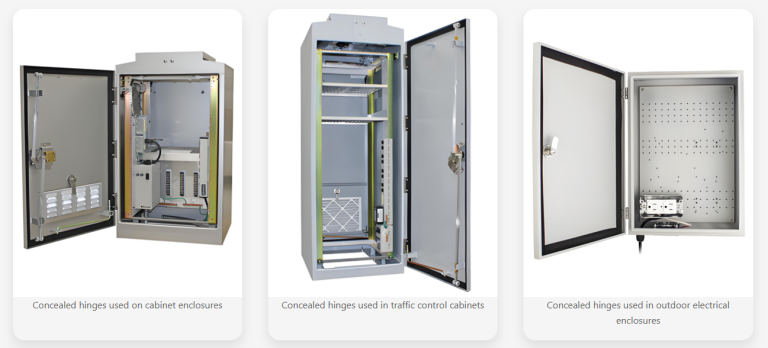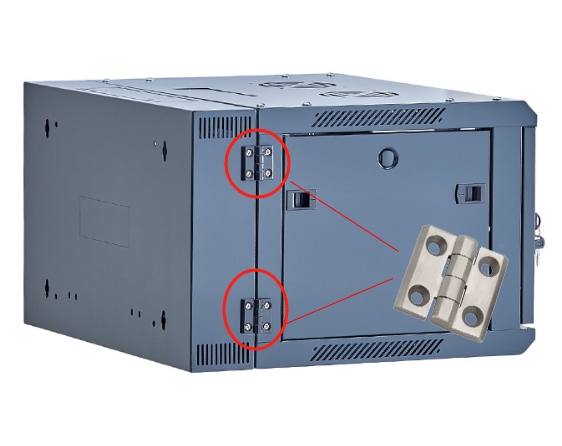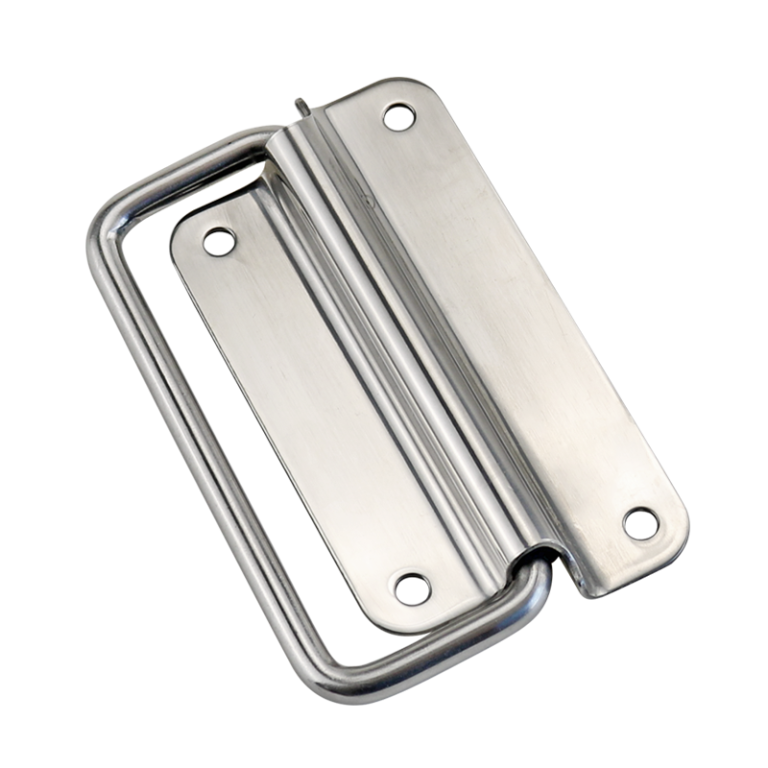HTAN is one of the leading manufacturers of industrial hinges, handles and latches in China.
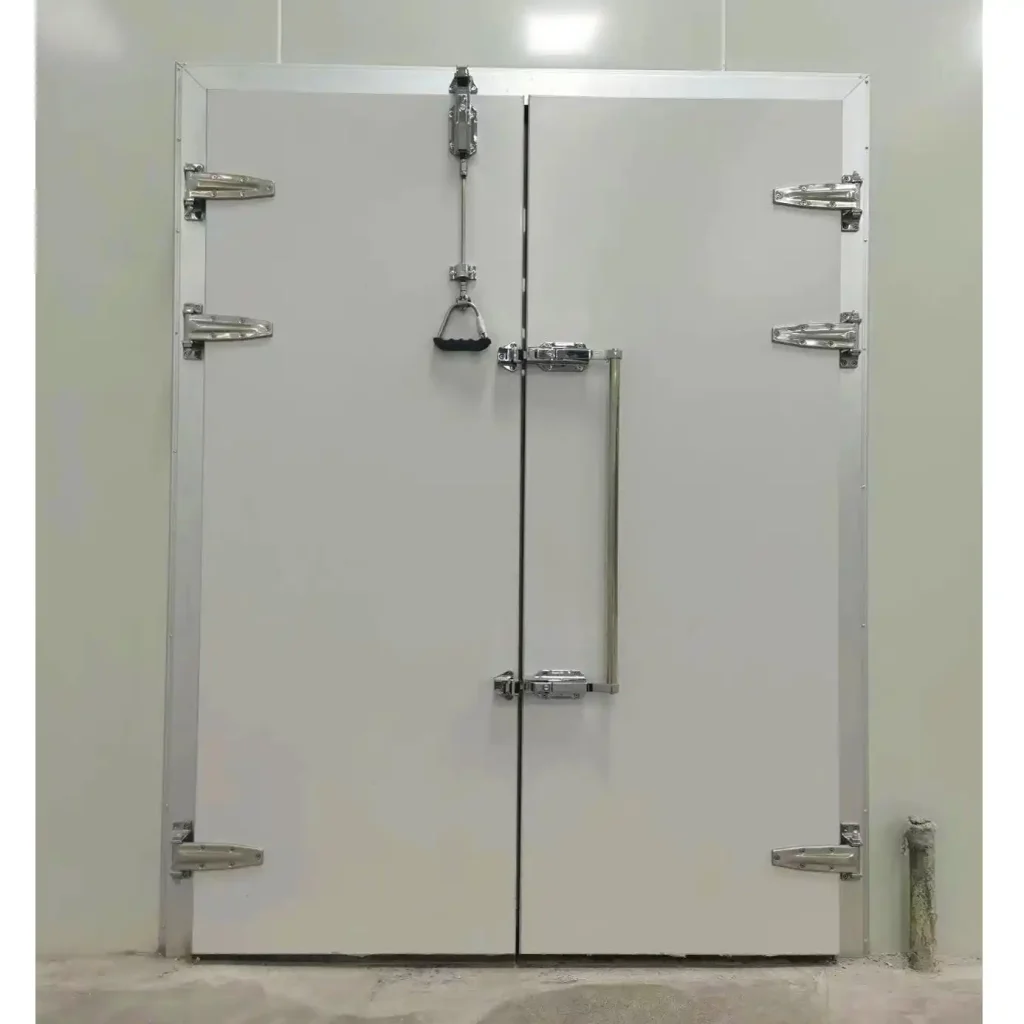
Every detail is crucial in the design and maintenance of a cold storage unit. As the core component of door opening and closing, hinges directly affect the sealing, durability, and operational efficiency of the equipment. A set of qualified cold storage hinges can not only prolong the life of the equipment but also avoid the waste of energy caused by cold air leakage. This article will provide you with a detailed analysis of the key elements of selecting cold storage hinges.
I. Recognize the Importance of Cold Storage Hinges
1. Special Challenges in Cold Environments
- Extreme Temperature Difference: Continuous low-temperature environment ranging from -18°C to 4°C.
- High Humidity Environment: Condensation buildup from frequent opening and closing of doors.
- Frequent Mechanical Movements: Commercial cold rooms are opened and closed hundreds of times a day.
- Hygiene Requirements: Food-grade areas need to prevent rust and contamination.
2. Potential Risks of Poor-Quality Hinges
- Seal Failure: Leading to cold air loss (energy consumption increased by more than 30%).
- Accidents: Caused by metal fatigue of the door falling off.
- Rust Contamination: Affecting stored items.
- Economic Losses: Caused by maintenance downtime.
II. The Five Golden Guidelines for Choosing Hinges
1. Material Science: Against Low-Temperature Corrosion
Comparison Table of Recommended Materials
| Material Type | Applicable Temperature Range | Rustproof Performance | Load Capacity | |
|---|---|---|---|---|
| 304 Stainless Steel | -50°C to 300°C | ★★★★☆ | Medium-High Strength | |
| 316 Stainless Steel | -100°C to 400°C | ★★★★★ | High Strength | |
| Nylon Reinforced | -40°C to 120°C | ★★★★☆ | Medium Strength | |
| Zinc Alloy Plating | -20°C to 80°C | ★★★☆☆ | Low Strength |
Option Suggestions:
- 316 Stainless Steel: Preferred for industrial cold storage.
- 304 Stainless Steel: Preferred for small and medium-sized commercial use.
- Lightweight Display Cabinets: Can consider engineering plastics.
- Avoid: Ordinary galvanized steel.
2. Load-Bearing Calculation: Safety First
Three-Step Calculation Method:
- Measure the Weight of the Door: Including seals, handles, and other accessories.
- Determine the Load-Bearing Value of a Single Hinge: It is recommended to take 80% of the nominal value as a safety margin.
- Calculate the Number of Hinges Required: Total weight / (single hinge load capacity × 0.8).
Example:
- 1.5m × 2.2m cold storage door weighs 85kg.
- Selection of H50 type hinge (nominal load 30kg).
- Calculation: 85 / (30 × 0.8) = 3.54 → 4 hinges to be installed.
3. Structure Type: Matching the Usage Scenario
Explanation of Six Common Types:
- Characteristics: Individual load capacity of at least 35KG.
- Applicable: Suitable for cold storage doors

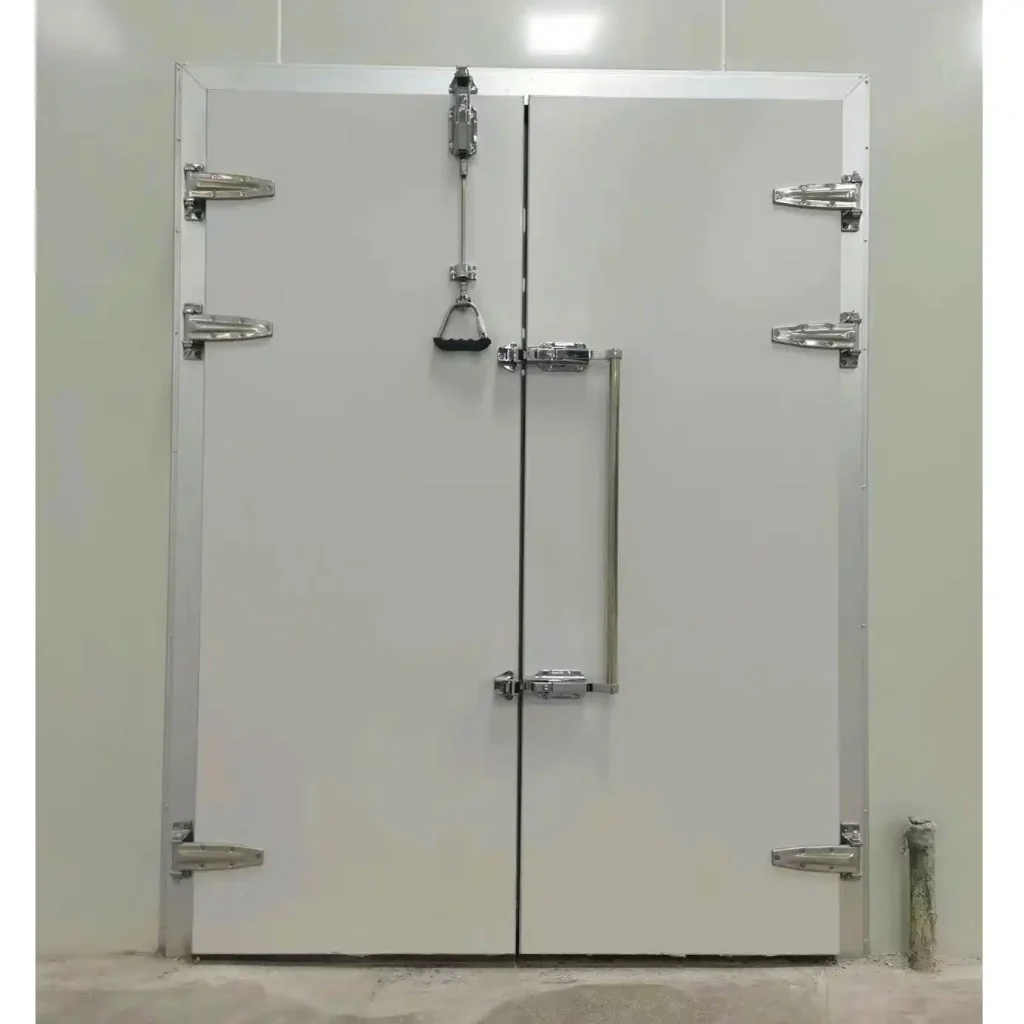
- Features: Recessed installation, easy to clean.
- Suitable For: Pharmaceutical cold chain aseptic environments.
- Note: Requires pre-built installation slot.

- Features: Built-in spring for automatic reset.
- Suitable For: Convenience store display coolers.
- Maintenance: Regular lubrication of the spring mechanism.
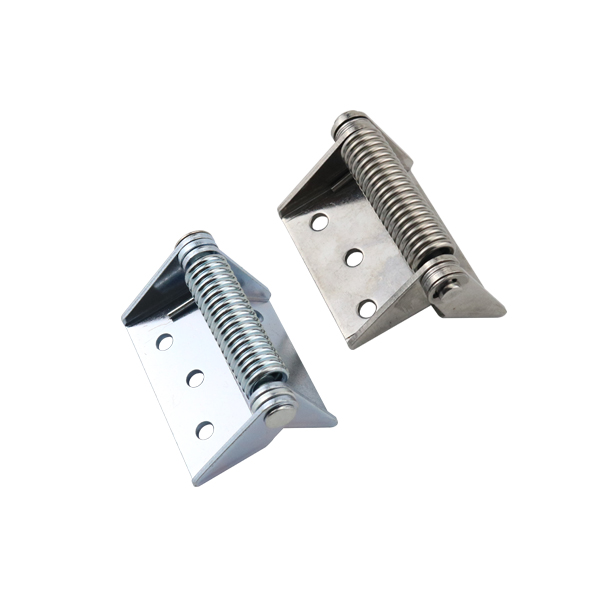
Quick Release Maintenance Type
- Features: Tool-free disassembly design.
- Suitable For: Food processing rooms that require frequent cleaning.
Multi-Directional Adjustable Hinge
- Features: Three-dimensional adjustable to compensate for deformation.
- Suitable For: Ultra-low temperature cold storage (below -40°C).

Anti-Condensation Design
- Features: Drainage groove + heat-insulating gasket.
- Applicable: High humidity seafood cold storage.
4.Seal Synergistic Design
An excellent hinge should have:
- Accurate Axis Positioning: Error < 0.5mm.
- Cushion Damping Design: Opening and closing angle 90°-110°.
- Stress Matching with Door Seal.
- Anti-Cold-Bridge Structure: Heat-break design is recommended.
5.Certification Standards
- Food Grade Certification: FDA 21 CFR 177.2600.
- Low-Temperature Test Certification: EN 12570.
- Anti-Corrosion Certification: ASTM B117 salt spray test 500 hours.
III. Professional Installation Guide
1. Pre-Treatment Key Steps
- Surface Preparation: Clean contact surfaces with isopropyl alcohol.
- Positioning Tips: Use a laser level to align.
- Drilling Specification: Hole diameter is 0.2mm smaller than the screws (e.g., drill 7.8mm holes for M8 screws).
2. Installation Precautions
- Pre-Heating of Tools: Required for low-temperature construction (to prevent metal brittleness).
- Use Special Low-Temperature Grease: e.g., Molykote EM-30L.
- Torque Control: 304 stainless steel M10 screws recommended at 18-22N-m.
- Staged Fastening: Initial installation → 24 hours low-temperature test → final fastening.
3. Acceptance Criteria
- Opening and Closing Force Test: 3-5kg push and pull force to open and close smoothly.
- Sealability Test: Paper clip test without slipping off.
- Durability Test: No abnormality for 200 times of continuous opening and closing.
IV. Intelligent Maintenance Program
1. Periodic Maintenance Program
Cycle Operation Items Tools Used
- Weekly: Check screw loosening (Torque wrench).
- Monthly: Clean the drainage channel (Fine bristle brush + compressed air).
- Quarterly: Lubricate bearings (-40°C low-temperature grease).
- Annually: Full stress test (Strain gauge).
2. Early Warning Signs of Failure
- Appearance of Abnormal Noise: Metal rubbing sound > 45 dB.
- Door Sinking: Sagging > 3mm.
- Leakage of Cold Air: Thickness of frost on door cracks > 2cm.
- Abnormal Opening and Closing Angle: Deviation from standard value > 15%.
3. Emergency Treatment Program
When hinge failure is found:
- Immediately stop using and hang a warning sign.
- Fix the door with a temporary support frame.
- Contact professional maintenance personnel (do not weld by yourself).
V. Cost-Benefit Analysis
1. Initial Investment vs. Long-Term Savings
- High-Quality Hinge Purchase Cost: 30-50% higher.
- Extended Service Life: 3-5 times longer.
- Energy-Saving Gain: Annual electricity cost savings of about 8-12%.
- Reduced Maintenance Costs: Over 60% reduction.
2. Brand Selection Strategy
- European and American Brands: Accuride, Hettich (high precision).
- Japanese Brand: Nabeya (high durability).
- Chinese Brand: HTAN (cost-effective).
Choosing the right reefer hinge requires systematic consideration of environmental parameters, usage requirements, and maintenance costs. It is recommended to consult professional engineers for load calculations before purchasing and to give preference to products that have passed authoritative certification. Remember: Quality hinges are the invisible guardians of the efficient operation of your cold storage system and deserve your investment in a smart choice.
If you are looking for high quality hinges, we recommend that you contact HTAN specialized suppliers for more product information and technical support.




